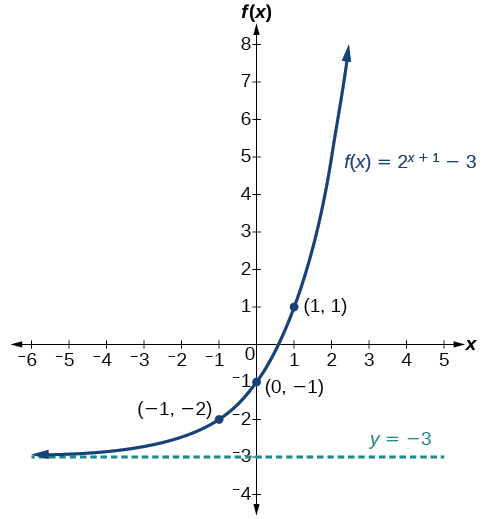24 = ?
16
What is the product rule?
When you multiply numbers with the same base, you add the exponents.
Convert to standard form.
3.56 x 105
356000
 Is the graph an example of growth or decay?
Is the graph an example of growth or decay?
Growth
How do you know if a function is exponential?
The variable is in the exponent.
3-3 = ?
1/27
What is the quotient rule?
When you divide numbers with the same base, you subtract the exponent.
Convert to scientific notation.
-0.000000623
-6.23 x 10-7
 What is the y-intercept? (Remember, this is a point!)
What is the y-intercept? (Remember, this is a point!)
(0, -1)
Evaluate the function at x = 3.
f(x) = -2x + 5
f(3) = -3
1/3-1 = ?
3
What is the power rule?
When you raise a number with an exponent to another power, you multiply the two powers.
3.765 x 103 + 4.35 x 104 = ?
4.7265 x 104
 What is the asymptote?
What is the asymptote?
y=-3
Will the function be exponential growth or decay?
f(x) = -3x - 7
decay
(9x2)2 = ?
81x4
True or false: A negative exponent changes the sign of the number.
(1.08 × 10−3)(9.3 × 10−3)
1.004 × 10−5
How can you tell if a graph is growth or decay?
A graph is growth if it increases to the right, and decay if it decreases to the right.
How will the function shift?
f(x) = 2x + 1
It will move up by 1.
(2r9)/(p2q2)
Explain why any number to the power of zero equals one.
Whenever you divide a number by itself, it always equals one! And since exponents are like repeated multiplication or division (depending on which way you go), when raising a number to zero, it is dividing that number by itself, and so it will always be equal to one.
(7.1 × 106)/( 8.2 × 101)
8.659 × 104
What is an asymptote?
A line that the function approaches but never actually touches.
What is the asymptote of the following function?
f(x) = -3x + 5
y = 5